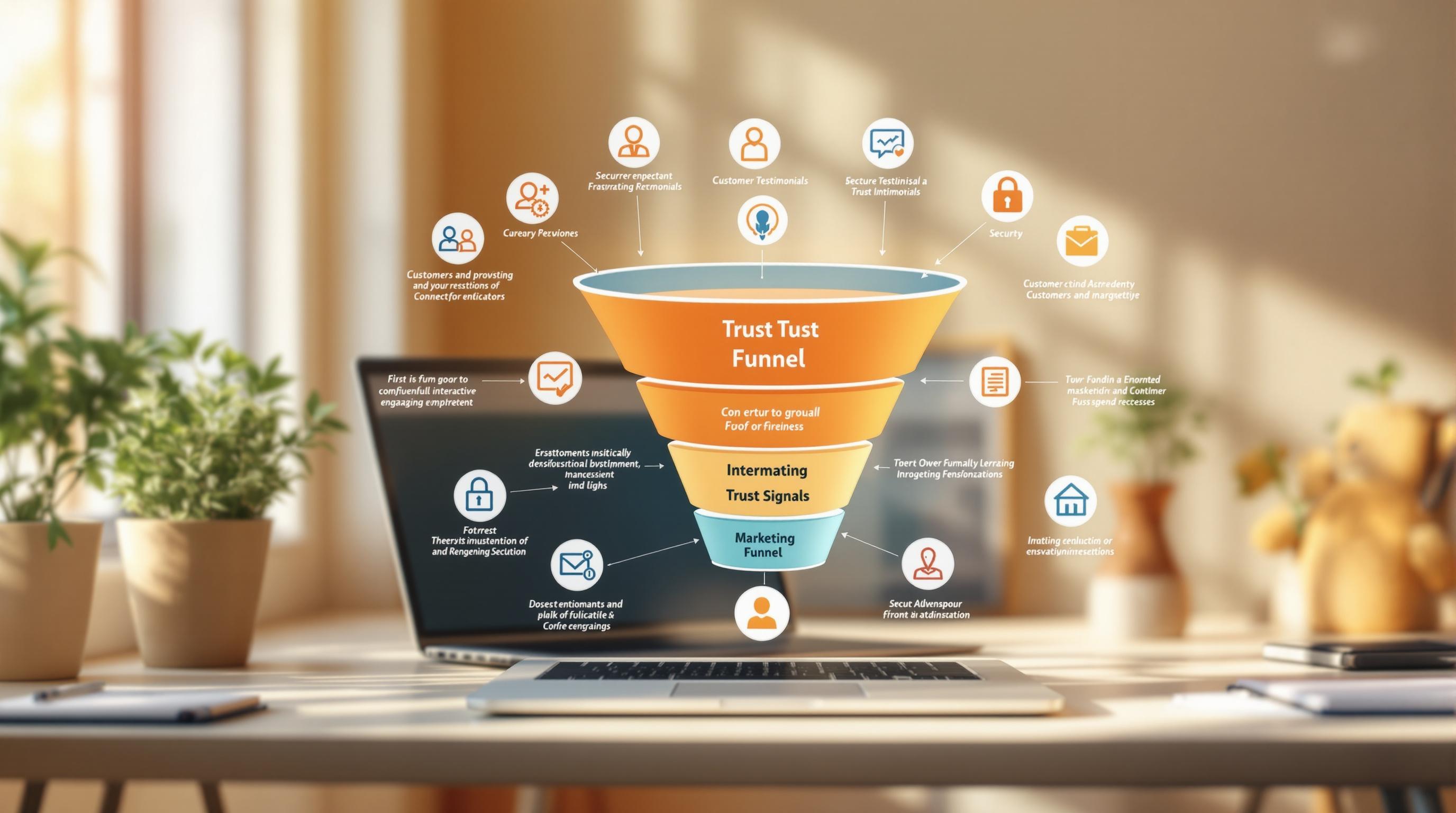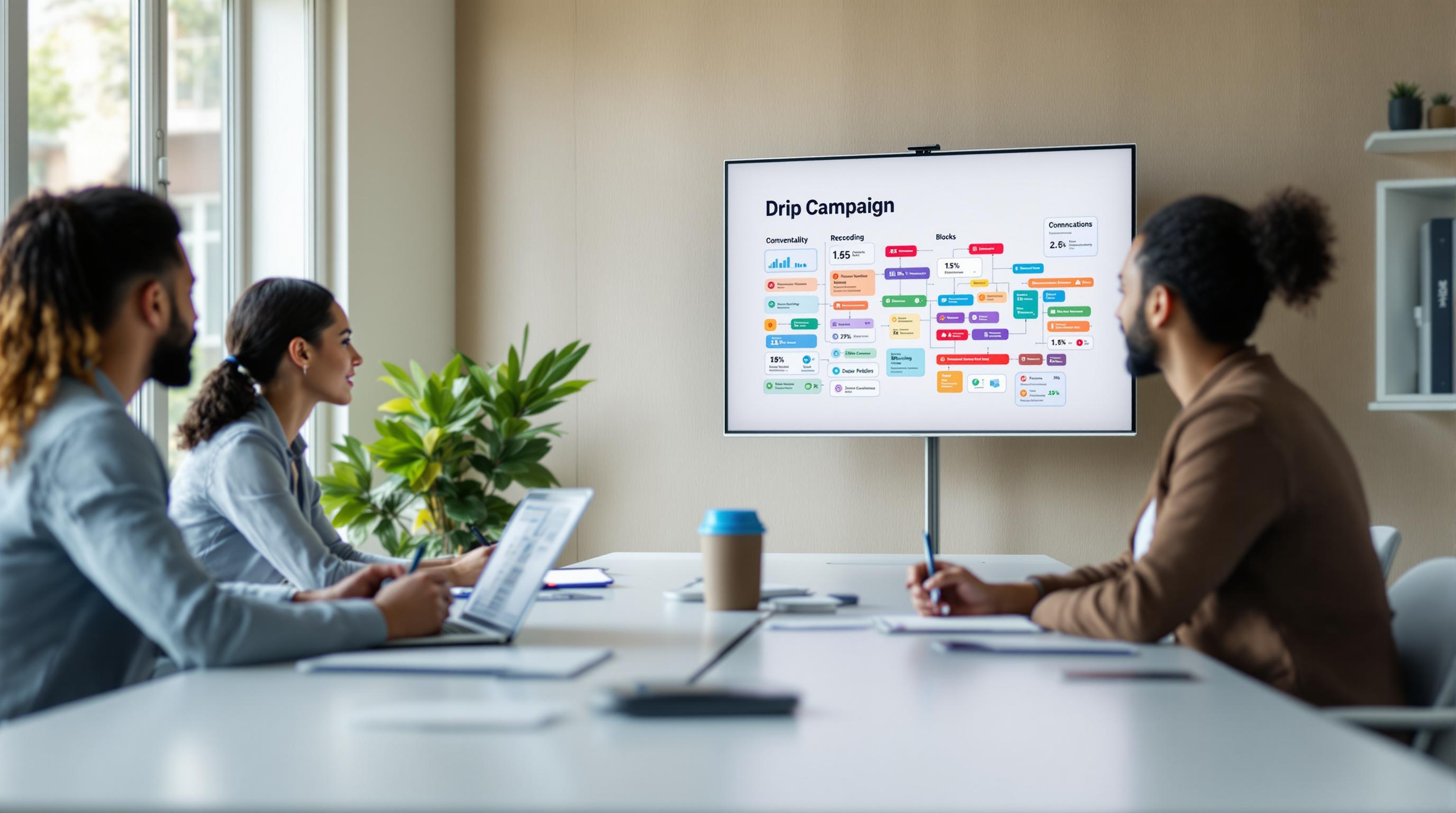The consideration stage is when potential customers actively research solutions to their problems, comparing options and evaluating what fits their needs best. At this point, they're not looking for a sales pitch - they want educational, detailed content to guide their decisions.
Key Takeaways:
- What Prospects Do: Research solutions, compare options, and evaluate implementation needs.
- What They Need: Clear, helpful content like guides, case studies, and product comparisons.
- Your Goal: Build trust by providing valuable insights, not by pushing a product.
Quick Overview of Content Types:
- Guides & Resources: Blog posts, step-by-step guides, templates, and technical documentation.
- Customer Success Stories: Real-world examples with measurable results.
- Product Information: Feature guides, demo videos, comparison charts, and ROI calculators.
Your content should meet their needs, help them make informed decisions, and position your brand as a reliable resource.
The Customer Journey: Consideration Stage
Who Are Prospects in the Consideration Stage?
Prospects in the consideration stage are actively searching for solutions, weighing their options, and diving into various content to make informed choices. Let’s break down their challenges and how they approach decisions.
Common Problems and Goals
These individuals are focused on solving specific challenges, such as:
- Business Growth: Breaking through revenue stagnation, improving operations, and reaching new markets.
- Resource Optimization: Making the most of their team's time, budget, and tools.
- Competitive Pressure: Staying ahead or catching up with competitors in their industry.
- Process Improvement: Fixing inefficiencies and adopting better systems.
How Prospects Make Decisions
Their decision-making process is thorough and involves several steps:
-
Research
They explore multiple channels, including product comparisons, demo videos, technical documentation, and webinars, to gather information. -
Evaluation
Prospects assess solutions based on factors like:- Ease of implementation
- Required resources
- Timeframe for seeing results
- Compatibility with existing systems
- Overall cost
-
Stakeholder Engagement
Decisions often involve input from several people, such as:- Department leaders directly impacted by the solution
- IT or technical teams handling the implementation
- Financial decision-makers
- End users who will interact with the solution daily
These prospects take a careful, structured approach, often using tools like evaluation matrices and conducting internal discussions. They look for content that provides clear comparisons and practical insights to guide them toward the best choice.
Content Types for the Consideration Stage
This section focuses on creating content that helps prospects evaluate their options and make informed decisions during the consideration stage.
Guides and Resources
Offer content that directly addresses your audience's needs, such as:
- Blog posts tackling common challenges or pain points
- Step-by-step guides explaining how to implement solutions
- Industry reports backed by reliable data
- Technical documentation that highlights compatibility
You can also provide downloadable tools like templates, checklists, or worksheets to make it easier for prospects to assess your offerings.
Customer Success Stories
Craft stories that resonate with your audience and address their concerns. These could include:
- Before-and-after scenarios showcasing measurable results
- Implementation timelines that outline the process step-by-step
- ROI breakdowns that emphasize financial outcomes
- Testimonials from decision-makers and end-users
Use specific metrics and timelines to add credibility and make the impact more tangible.
Product Information
Help prospects evaluate your solution by creating comparison-focused content:
| Content Type | Purpose | Key Elements |
|---|---|---|
| Feature Guides | Understand features | Specifications, capabilities, requirements |
| Demo Videos | Showcase use cases | Interface walkthroughs, setup process |
| Comparison Charts | Compare solutions | Features, pricing tiers, implementation needs |
| ROI Calculators | Assess value | Cost analysis, potential savings, returns |
Other helpful content includes:
- Product tours that highlight standout features
- Integration guides showing how your product fits with existing systems
- Configuration examples to illustrate customization options
- Performance benchmarks that back up your claims with data
Each piece of content should align with the specific criteria prospects use when comparing options.
For additional resources, the Marketing Funnels Directory offers templates and tips to help you create effective content that turns prospects into customers.
sbb-itb-a84ebc4
Where to Share Consideration Content
Focus on distributing your consideration-stage content where potential customers actively search for solutions.
Email Marketing Steps
Start with a welcome email that identifies key pain points and offers a preference center. This allows subscribers to choose their main interests and challenges, making it easier to send them relevant content later.
Educational Content Sequence
Create a 4-6 email series that gradually introduces your solution:
| Purpose | Content Type | Timing | |
|---|---|---|---|
| 1 | Define Problem | Industry Report | Day 1 |
| 2 | Solution Overview | Case Study | Day 3 |
| 3 | Feature Deep-Dive | Product Demo | Day 5 |
| 4 | Showcase Success | Customer Stories | Day 7 |
Engagement-Based Adjustments
Track how readers interact with your emails and adjust accordingly:
- Highly engaged readers: Shorten the sequence for faster delivery.
- Less engaged readers: Space out emails to avoid overwhelming them.
- Inactive subscribers: Move them to a re-engagement campaign to reignite interest.
Don't limit yourself to email - extend your strategy to social media and targeted advertising.
Social Media and Ad Strategy
Use a multi-platform approach to stay visible to prospects.
Retargeting Campaigns
Promote your content strategically across platforms:
- LinkedIn: Share in-depth guides and case studies aimed at decision-makers.
- Facebook/Instagram: Use carousel ads to showcase key features or benefits.
- YouTube: Share product demos and how-to videos to engage viewers.
- Twitter: Post quick tips and customer success stories to spark interest.
Boosting Content Visibility
- Use platform-specific formats like Instagram Stories or LinkedIn Carousels.
- Test different ad formats and fine-tune based on performance data.
- Adjust targeting based on user engagement metrics.
- Monitor metrics like cost-per-click (CPC) and conversion rates for each platform.
For more ideas, check out the Marketing Funnels Directory to fine-tune your content distribution strategy across multiple channels.
Track and Improve Content Results
Key Metrics to Monitor
Keep an eye on these crucial metrics to gauge your content's performance:
Engagement Metrics
| Metric | Target Range | What It Reveals |
|---|---|---|
| Time on Page | 3-5 minutes | Indicates content relevance and depth |
| Return Visits | 25-30% | Reflects how useful the information is |
| Social Shares | Over 5% of views | Shows how valuable the audience finds the content |
| Email Click-Through | 15-20% | Measures the effectiveness of your message |
Conversion Metrics
Evaluate how your content drives actions:
- Content Downloads: Track downloads of resources to uncover which topics resonate most.
- Demo Requests: Measure the percentage of readers requesting product demos.
- Sales Inquiries: Identify which pieces spark direct sales conversations.
- Lead Quality Score: Analyze how well content attracts high-quality prospects.
Testing and Refining Content
Use the data you collect to fine-tune your content strategy. Testing and updates are key to improving results.
A/B Testing Tips
Test one element at a time for clearer insights:
- Headlines: Compare problem-focused versus solution-focused titles.
- Content Format: Try long-form guides against shorter, more targeted pieces.
- Call-to-Action: Experiment with different value-driven CTAs.
- Visuals: Test content with and without elements like charts, graphics, or videos.
Content Review Schedule
Set up a consistent schedule to revisit and improve your content:
- Monthly: Analyze engagement metrics and flag underperforming pieces.
- Quarterly: Refresh statistics and examples in existing content.
- Semi-Annually: Perform a full audit to ensure content aligns with current audience needs.
Scoring Content Performance
Use a simple scoring system to evaluate content and decide next steps:
| Score | Criteria | Action Plan |
|---|---|---|
| A (90%+) | Hits all key metrics | Amplify promotion efforts |
| B (70-89%) | Meets most targets | Make minor tweaks |
| C (50-69%) | Delivers mixed results | Requires significant updates |
| D (<50%) | Falls short | Consider replacing or removing |
Conclusion: Next Steps for Content Success
Now that we've covered content types and distribution strategies, let's focus on actionable steps to improve your results.
Creating effective content for the consideration stage means combining a deep understanding of your audience with resources tailored to their needs. To get the most out of your efforts:
- Keep an eye on engagement metrics, update your content regularly based on a scoring system, and use A/B testing to refine your approach.
If you're aiming to improve your strategy for this stage, the Marketing Funnels Directory offers tools and resources designed to help you fine-tune your funnel. Their collection of content marketing tools can simplify the process of creating and distributing content for this critical phase.
Since audience needs and market trends are always changing, it's important to implement tracking systems and regularly adjust your approach. Doing so will help you craft content that guides prospects toward making confident purchase decisions.
Take time to audit your current content against these guidelines and build a strategy that directly addresses key decision-making factors with clear, compelling value.


